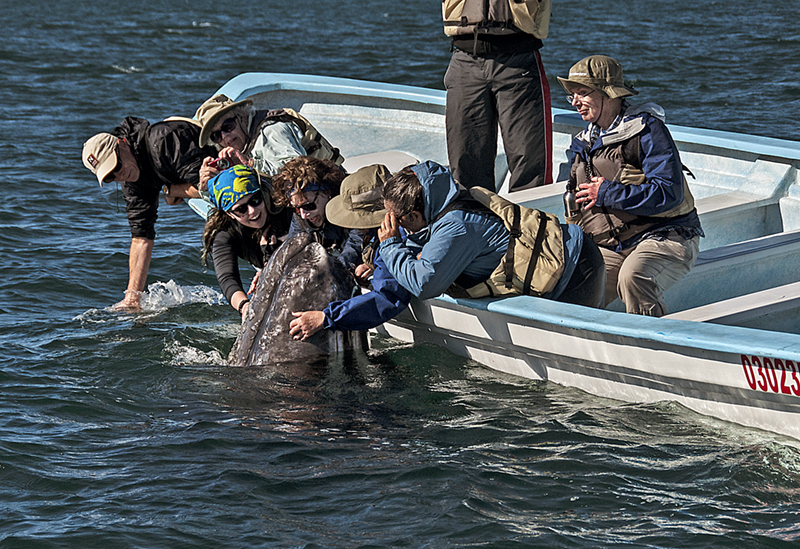
It's time to end the cruel slaughter
of whales
and leave these magnificent creatures alone.
Paul McCartney
This is my first visit to the pencil thin peninsula of Baja, a state of Mexico, yet worlds apart from the "mainland." Home base is the quaint village of Loreto, worth a visit by itself. But this trip is not about culture. My mission is to see and photograph the California gray whales. And maybe, just maybe, have an up close and personal encounter with them. This will be my second major whale excursion. The first was in the Caribbean. I figure Baja will have to be anticlimactic after what happened with the humpbacks of the Silver Banks (see previous page). Time would prove me wrong. The gray whales of Baja had a few surprises of their own.
Each autumn the eastern Pacific population of gray whales leaves its feeding grounds in the Bering and Chukchi Seas, off Alaska, and swims 5,000 miles to San Ignacio Lagoon of Baja to calve, nurse, and mate. The shallow lagoon is perfect for the whales to do their thing, and for us to see and hopefully interact with them. And I am told that several hundred are waiting for us.
During the whaling era the grays understandably tried to avoid humans, though not very successfully. For more than a century whalers hunted them along the Baja coast, eventually reducing the stock to endangered status. In 1946 total protection was granted and numbers have gradually crept up.
Whalers nicknamed the grays "devilfish" and "hardhead." One of their ploys was to harpoon a calf first to lure its mother into range. This method didn't always go according to plan. At times the enraged mom would attack and overturn their skiff by using her head as a ram. Or she might simply crush it with a whack of her massive tail. For some reason the whalers took offense.
Over a three day period we visited the whales six times, two hours each, in small boats called pangas. During every encounter several "friendly" moms with calves approached us for reasons known only to whales. They seemed genuinely curious and playful, but this is human reasoning. Who really knows? After all these are wild creatures. We observed the entire spectrum of surface activity, including blowing (sometimes right in our faces), breaching, spy hopping, and fin and tail slapping. Moms and babes would occasionally swim toward the boat, then turn on their backs to have their bellies rubbed. Of course, we obliged, even as we smiled and squealed, and took photos.
But the highlight was when a calf would swim right up to the boat, then lift its head out of the water to be scratched, coddled, or whatever, staring at us with trusting eyes. This was no freak event as with the humpback. It happened repeatedly with different whales. It has happened many times in the past. Mom was always close by, observing, but apparently unconcerned by baby's behavior. No aggression was shown, as in the whaling days. As far as we know this is the only occurrence of such maternal tolerance in the "wild kingdom." The "devilfish" seem to have forgiven us for our whaling atrocities. Perhaps there's a lesson here.